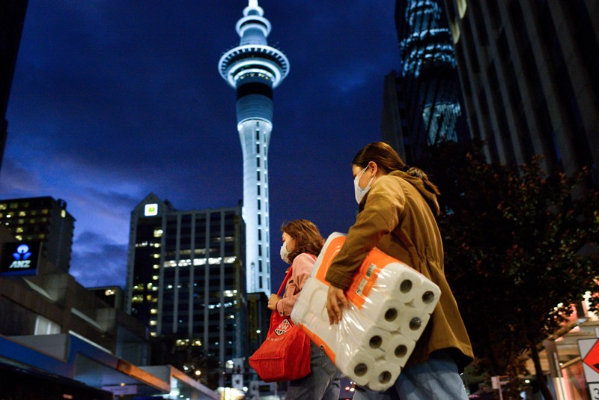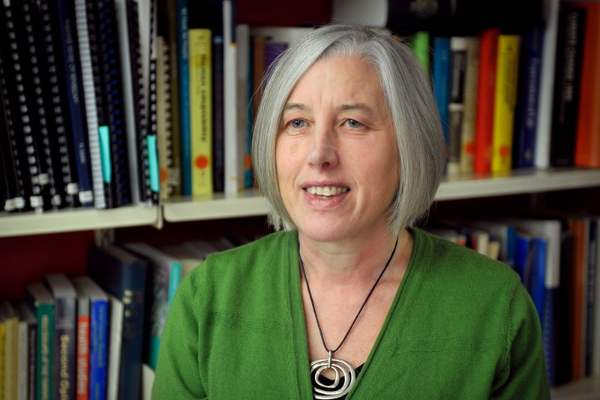‘We Felt We Had Beaten It’: New Zealand’s Race To Eliminate The Coronavirus Again
Genomics could reveal details about the source of the country’s first outbreak in more than 100 days, says epidemiologist Amanda Kvalsvig
By Dyani Lewis

A week ago, New Zealand was an exemplar for how swift and decisive action can stifle the spread of the coronavirus. No locally acquired cases of COVID-19 had been reported since the start of May. But the emergence this week of a cluster of cases — currently numbering 30 — has caught the nation by surprise, and is a blow to the government’s strategy to eliminate the virus.
Amanda Kvalsvig, an epidemiologist at the University of Otago in Wellington, has been assisting with the country’s COVID-19 response. She spoke to Nature about the rapid response to the new cases, and whether an elimination strategy is still possible.
How has the mood in New Zealand changed?
The new cases have been a shock. When they were announced, New Zealand had experienced more than 100 days with no identified community transmission, despite extensive testing. The country was at its lowest alert level, which allows near-normal activities, albeit with strict controls requiring travellers from overseas to remain in a quarantine facility for two weeks. There was a general feeling that we had beaten the virus — although government officials and public-health experts were warning against complacency.
Now, there’s widespread anxiety, with long lines of people at COVID-19 testing stations and some people panic-buying in supermarkets.
What has been the public-health response to these new infections?
The response has been swift, backed up by decisive government action. The Auckland region, where the cases were identified, is now at Alert Level 3 — the second-highest of four levels — with people instructed to stay at home apart from essential movement. The rest of the country is at Alert Level 2, which includes physical distancing measures and limits on mass gatherings.

Amanda Kvalsvig says the new cases have come as a shock to the community.Credit: Luke Pilkinton-Ching, University of Otago
People with COVID-19 and their contacts are being tested and traced. These are familiar measures but there are some new approaches, too. For example, the government is now recommending the use of face masks, and people with COVID-19 in the community will spend their isolation period in dedicated facilities instead of at home.
I and other public-health advocates have been strongly recommending population-wide mask use, which could help the country to avoid future lockdowns. Clear advice on risk would also help. For instance, there’s emerging evidence that the virus is transmitted readily in closed settings where people are speaking loudly, laughing and singing. This changes our thinking about ‘mass gatherings’ and gives a more nuanced sense of where the risks are.
What is known about the original source of the outbreak?
The new cases came to light when a person in their fifties developed symptoms and presented for testing. Following that original positive test, their household and other contacts were tested, identifying further cases.
All of the new cases seem to be part of the same cluster, but that hasn’t been linked back to its point of introduction into the country. That is concerning because we don’t yet know how long this outbreak has been propagating and how many other cases might have been missed. Ideally, investigations will allow the public-health system to ‘backwards trace’, identifying each source of the known cases, and then ‘forwards trace’ to identify other close contacts of that source.
Authorities are exploring the possibility that the virus arrived on packaging in cold storage. That’s certainly worth exploring, but global experience with COVID-19 outbreaks so far suggests that the outbreak is far more likely to have originated from person-to-person close contact, either while people are en route to New Zealand or during quarantine at the border.
Could the virus have been spreading undetected in the community for some time?
It’s possible that the current cases are several generations on from the original introduced case, or cases. Around one-third of COVID-19 cases cause no symptoms, so a transmission chain could propagate through several generations before someone is unwell enough to have a test.
Another factor is that winter coughs and colds make it harder to detect a spike of COVID-19 transmission in the community. New Zealand uses surveillance system to track influenza-like illnesses. There hasn’t been a significant uptick in these illnesses in recent weeks; in fact, the incidence is still far below what we would usually see at this time of year. That’s encouraging, because it suggests that although we certainly will detect more cases in the coming days, a massive undetected COVID-19 outbreak is unlikely.
It’s seems likely that the outbreak dates to a more recent introduction through the border in one way or another. But it would be good to know exactly when and how it arrived.
What could genomics tell us about this latest outbreak?
Genomic epidemiology is a powerful tool for tracing outbreaks back to the source, so it’s particularly relevant to the current situation, where the original case is still unknown. Genomic sequencing was used to investigate COVID-19 clusters in New Zealand earlier this year, and in several instances, investigators were able to link cases to a known cluster when conventional public-health methods hadn’t been able to establish the link. It can also identify situations in which cases seem to be linked through close contact, but actually belong to separate clusters.
If all of the Auckland cases turn out to be from one cluster, that will be good news for outbreak control. If there’s more than one cluster, it will suggest more widespread transmission.
New Zealand has adopted an elimination strategy. Does this latest outbreak suggest that isn’t possible?
We know that elimination is possible because New Zealand eliminated community transmission before. We expect to move in and out of elimination for the foreseeable future. The goal is to maintain zero community spread but this country will always be under threat from infections being introduced through the borders. No border-control system can be 100% fail-safe. But because we’re starting from a baseline of elimination, it should be feasible to extinguish each new outbreak using all the control measures we have at our disposal, including case and contact management, physical distancing and mass masking.
We’ve been fortunate to have outstanding political and scientific leadership in New Zealand. This has generated rapid and decisive action to protect population health. A key element of New Zealand’s response has been excellent communication with the public about what is happening and what is expected of them.
Stringent control measures have caused hardship for many people, so the high levels of adherence are a testament to the trust that people have in government at the moment. We’ve also seen tremendous compassion and innovative spirit around the country. Control measures have imposed a heavy burden on low-income communities, in particular on Māori and Pacific populations. But community organizations, notably those led by Māori, have provided vital support, delivering food parcels and re-orienting health and social services to be accessible to those most in need.
doi: 10.1038/d41586-020-02402-5
This interview has been edited for length and clarity.


 Peter Dunne: Luxon Gets Out His Butcher's Knife - Briefly
Peter Dunne: Luxon Gets Out His Butcher's Knife - Briefly Binoy Kampmark: Warring Against Encryption, Australia Is Coming For Your Communications
Binoy Kampmark: Warring Against Encryption, Australia Is Coming For Your Communications Gordon Campbell: On Fast Track Powers, Media Woes And The Tiktok Ban
Gordon Campbell: On Fast Track Powers, Media Woes And The Tiktok Ban Binoy Kampmark: Censorship Wars, Elon Musk, Safety Commissioners And Violent Content
Binoy Kampmark: Censorship Wars, Elon Musk, Safety Commissioners And Violent Content Gordon Campbell: On The Public Sector Carnage, And Misogyny As Terrorism
Gordon Campbell: On The Public Sector Carnage, And Misogyny As Terrorism Ramzy Baroud: NATO’s Never-ending War: The 75-Year-Old Bully Is Faltering
Ramzy Baroud: NATO’s Never-ending War: The 75-Year-Old Bully Is Faltering